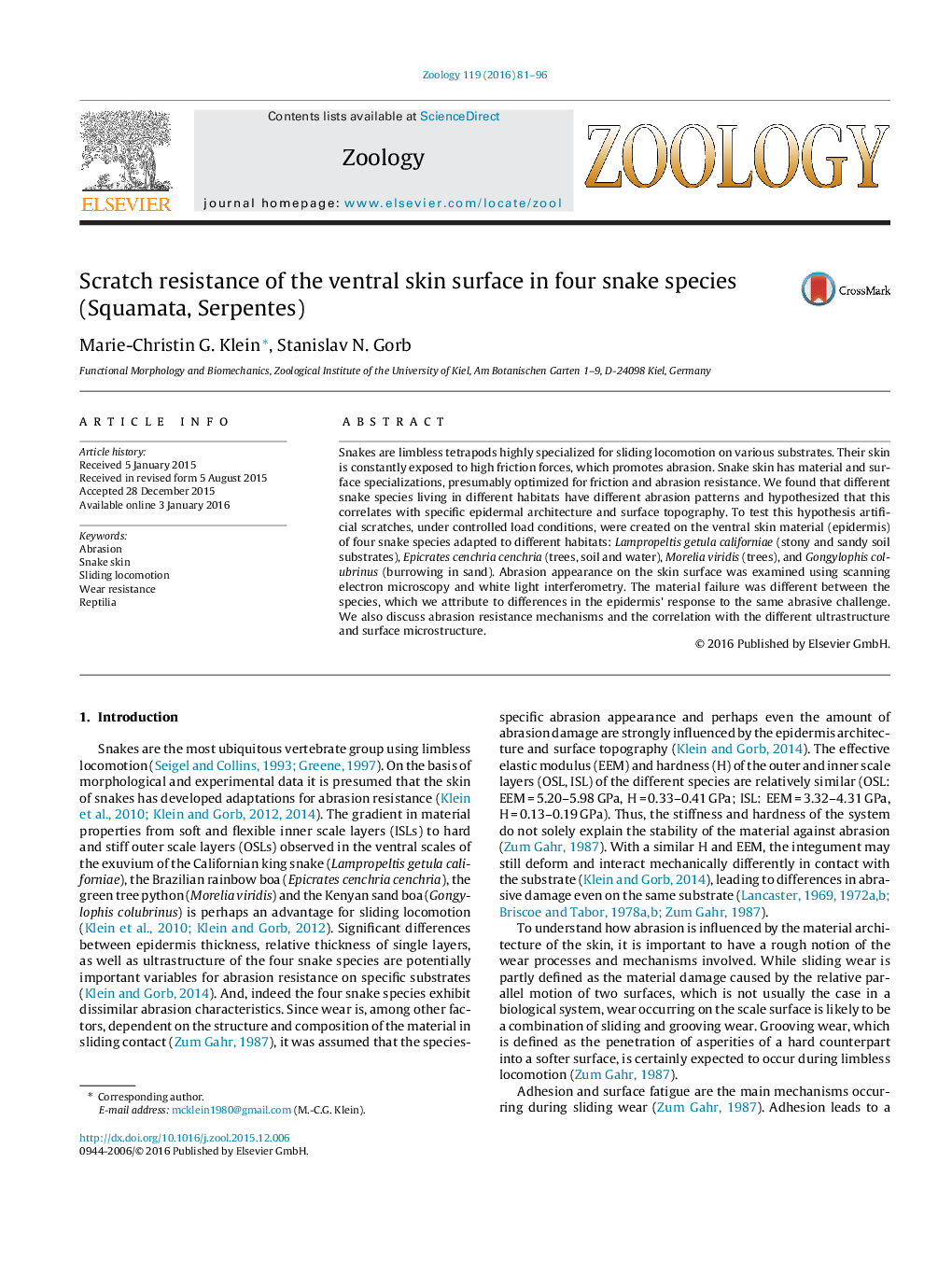| Article ID | Journal | Published Year | Pages | File Type |
|---|---|---|---|---|
| 2790971 | Zoology | 2016 | 16 Pages |
•Controlled artificial wear was created on the epidermis of four snake species.•Material failure is different between the snake species studied.•Epidermal architecture/surface structure may influence mechanical behavior.•Specific mechanical behavior seems optimized to specific habitat demands.
Snakes are limbless tetrapods highly specialized for sliding locomotion on various substrates. Their skin is constantly exposed to high friction forces, which promotes abrasion. Snake skin has material and surface specializations, presumably optimized for friction and abrasion resistance. We found that different snake species living in different habitats have different abrasion patterns and hypothesized that this correlates with specific epidermal architecture and surface topography. To test this hypothesis artificial scratches, under controlled load conditions, were created on the ventral skin material (epidermis) of four snake species adapted to different habitats: Lampropeltis getula californiae (stony and sandy soil substrates), Epicrates cenchria cenchria (trees, soil and water), Morelia viridis (trees), and Gongylophis colubrinus (burrowing in sand). Abrasion appearance on the skin surface was examined using scanning electron microscopy and white light interferometry. The material failure was different between the species, which we attribute to differences in the epidermis' response to the same abrasive challenge. We also discuss abrasion resistance mechanisms and the correlation with the different ultrastructure and surface microstructure.
